The Cameron Suspension Bridge, located along HWY-89 in Cameron, Arizona, is an iconic landmark that holds both historical and architectural significance. Spanning the Little Colorado River, this suspension bridge has played a crucial role in connecting communities, facilitating transportation, and contributing to the local economy. With its unique design and rich history, the Cameron Suspension Bridge continues to attract visitors and serves as a testament to human ingenuity.
In this article, we will explore the fascinating story behind this bridge, its impact on the local community, and its role in Arizona’s transportation infrastructure.

What is the Cameron Suspension Bridge?
Located near the eastern entrance of Grand Canyon National Park and inside Coconino County, the Cameron Suspension Bridge spans the Little Colorado River. It connects the Navajo Nation and the Hopi Reservation, providing a vital transportation route for both residents and tourists exploring the stunning landscapes of northern Arizona.
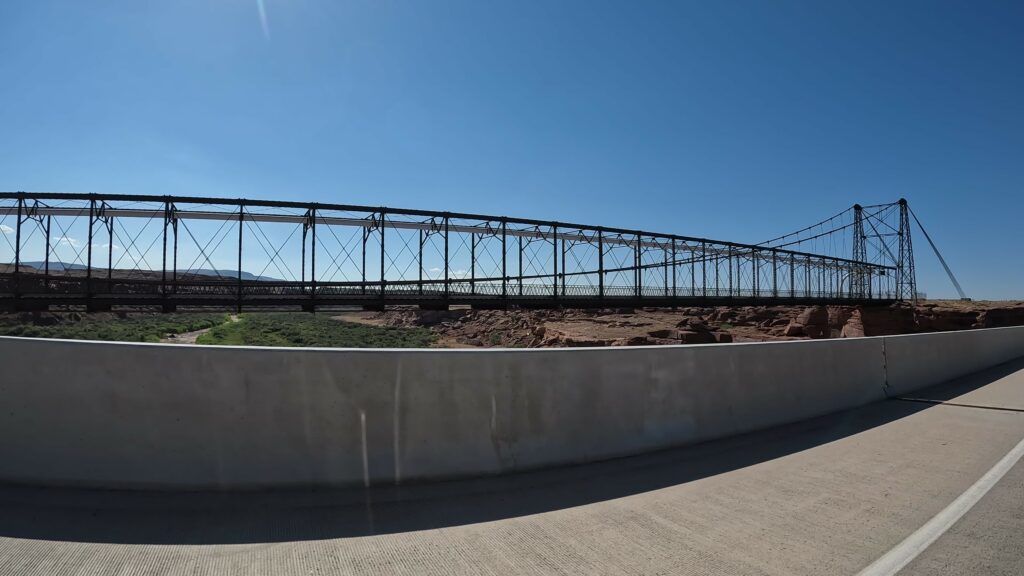
Tanner’s Crossing Before the Bridge
The main way to cross the river at the edge of the Hopi and Navajo reservations was Tanner’s Crossing, named after Mormon prospector Seth Tanner from Tuba City. However, the rocky crossing was rampant with danger. Flooding and quicksand were unpredictable and dangerous. Tanner’s Crossing was located right in the same location of the old Cameron Suspension Bridge.
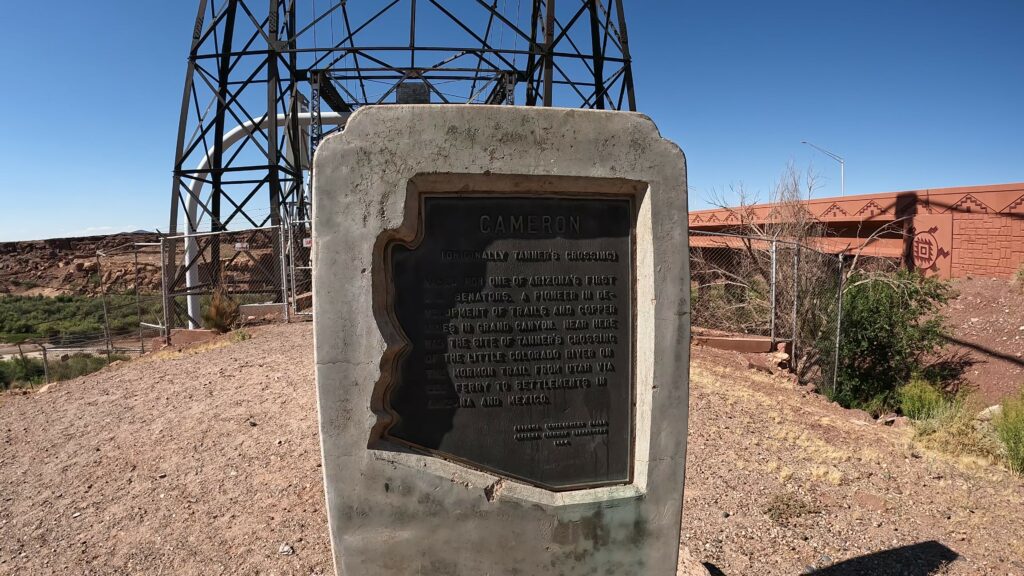
Bridge Construction
The origins of the Suspension Bridge date back to the early 20th century. The bridge was built by the Midland Bridge Co. of Kansas City in 1911, It has an overall length of 680 feet and a main span of 660 feet. Midland Bridge Company’s W.H. Code designed this unique suspension design for the construction of a bridge spanning Little Colorado River.
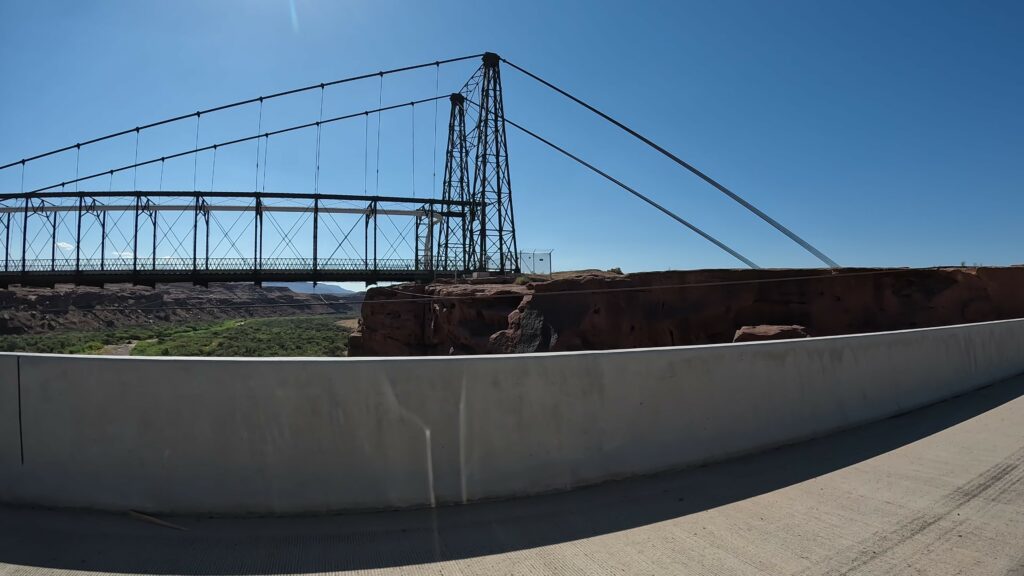
The bridge towers rest on the rim of the canyon, with concrete deadmen anchoring the suspension cables some way back from the towers. The suspension cables consist of seven woven steel cables clamped together. The deck is stiffened by a Pratt through-truss, with a 14-foot (4.3 m) wide roadway. The bridge was not wide enough to allow anything other than one-way for wagons and motor vehicles.
Midland Bridge Co. built the $90,000 bridge for the Office of Indian Affairs and the Indian Irrigation Service partially to provide better access to the Navajo Nation and the Hopi. Before this bridge, travelers had to cross the Little Colorado River which could be dangerous depending on the water level in the river.
The suspension-type design was chosen to overcome the challenges of a steep-walled canyon. This required a single span with no temporary falsework.
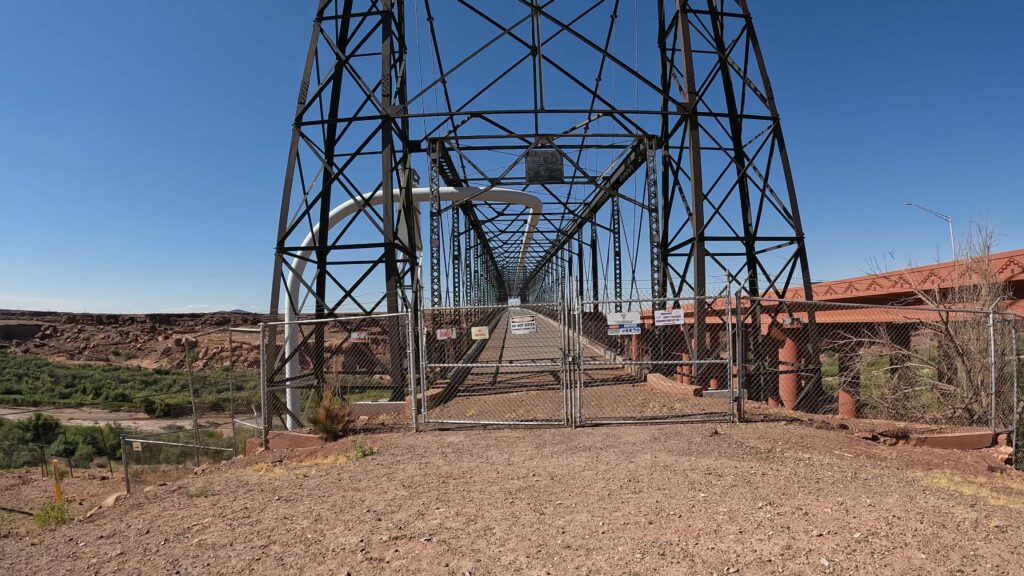
The 1911 suspension bridge is named for U.S. Senator Ralph H. Cameron.
Cameron Growth
The city of Cameron saw growth through the existence of the new Suspension Bridge in 1911. The bridge opened up the Native American lands to the North and also provided a northern gateway to the South Rim of the Grand Canyon when the bridge opened. This increased traffic crossing the bridge meaning more people would pass through Cameron while traveling across the bridge.

In 1916, the Cameron Trading Post and Lodge was established, located beside the new bridge, to serve the Navajo & Hopi locals coming to barter their wool, blankets, & livestock for dry goods. Lodging was also a need for travelers between Flagstaff and the Indian lands, as well as to the Grand Canyon’s South Rim about thirty minutes away. The Cameron Trading Post was established to do just that and is still operating in Cameron.
The bridge acted as a meeting point for people from different backgrounds, bridging the gap both literally and figuratively.
Renovations and Repairs
It is a simple wire cable bridge designed to support the weight of wagons and livestock. Over time, the bridge underwent various renovations, so to ensure its durability and ability to accommodate modern vehicles.
In 1937, the one-lane bridge almost collapsed due to an overload of crossing sheep. Although its back stays and suspenders were damaged, the structure continued to carry traffic with only deck and stringer replacement. The deck was replaced in 1947.
In 1959, the ADOT abandoned the 1911 Suspension Bridge in place and sold it to the Four Corners Pipeline Company. They ran a natural gas pipeline using the bridge to cross the Little Colorado River. Questar Pipeline acquired the Four Corners Pipeline and is now a part of the Southern Trails Pipeline. The pipeline currently carries oil and utility lines across the Little Colorado River.
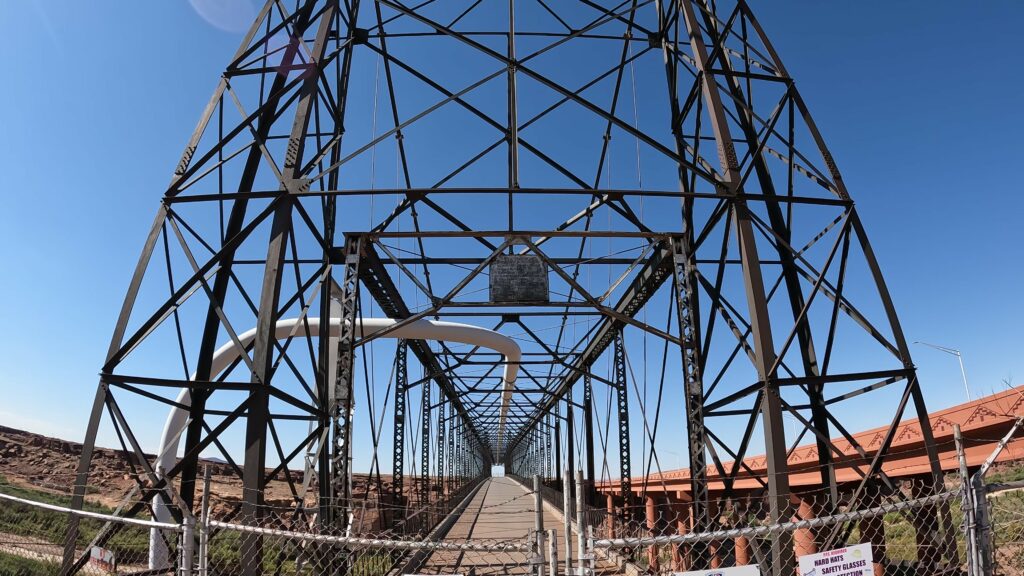
Replacement
The 1911 bridge formerly carried U.S. Route 89, but was replaced by a newer deck truss bridge for $1,000,000 in 1959. The location was just east of the 1911 bridge. This was important for many reasons but most importantly the bridge was needed for transport of materials to build the Glen Canyon Dam in Page, AZ. The Cameron Truss bridge was useful for the next 57 years.
In 2014, ADOT started a project that included tearing down the truss bridge and erecting a modern, wider crossing in its place. It was part of a $38 million, two-year project that also included expanding US 89 from two lanes to four and adding three miles of upgrades south of the bridge. New sidewalks, streetlights, and four pedestrian and livestock underpasses were completed.
Once completed in 2016, the modern replacement has two bridges, one each for northbound and southbound traffic. Each lane measures 12 feet.
Historic Recognition
The Cameron Suspension Bridge is the oldest suspension bridge in Arizona and one of only two of that type in the state. When built, the Cameron Bridge was the longest suspension span west of the Mississippi River.

The Cameron Suspension Bridge is on the National Register of Historic Places originating on June 5, 1986.
Where is the Cameron Suspension Bridge Located?
The Bridge is in Cameron, AZ where Hwy-89 crosses the Little Colorado River. Cameron is approximately 53 miles north of downtown Flagstaff, about 77 miles south of Page, AZ, and about 25 miles south of Tuba City.
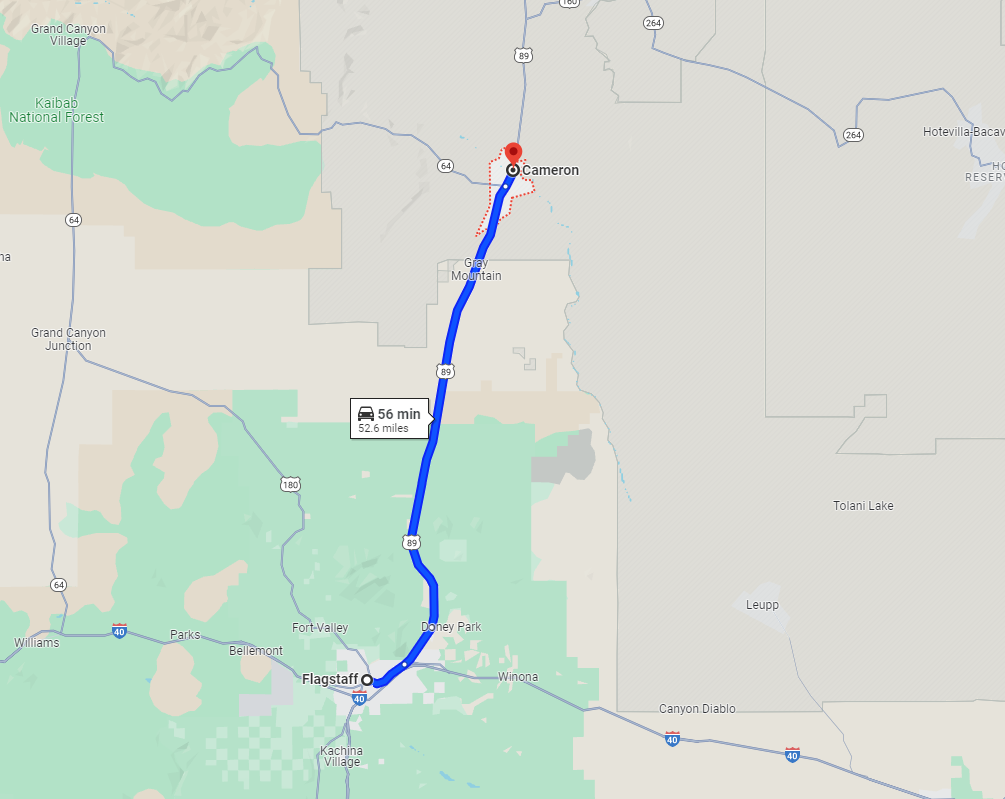
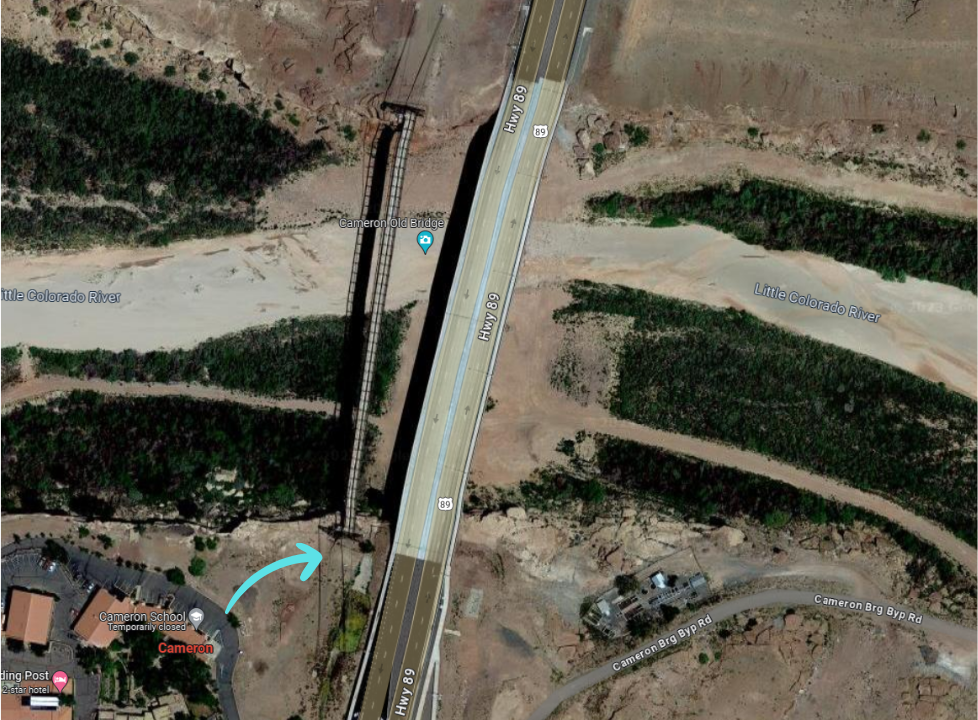
What to Expect at the Cameron Suspension Bridge?
You are able to get pretty close to the south and north ends of the bridge however it is fenced so you can not go on the bridge. On the south side, you just pull off in the Cameron Trading Post and Lodge and drive to the back where you can park and go check out the bridge.
The newer bridges, built between 2014-2019, are currently in use on the Hwy 89 crossing. The Suspension Bridge is fenced off and no vehicular or pedestrian traffic is allowed.
Nearby Attractions
As mentioned above, there are many nice attractions near Flagstaff. If heading to the Meteor Crater Natural Landmark, consider exploring these attractions as well:
East of Flagstaff
Walnut Canyon National Monument
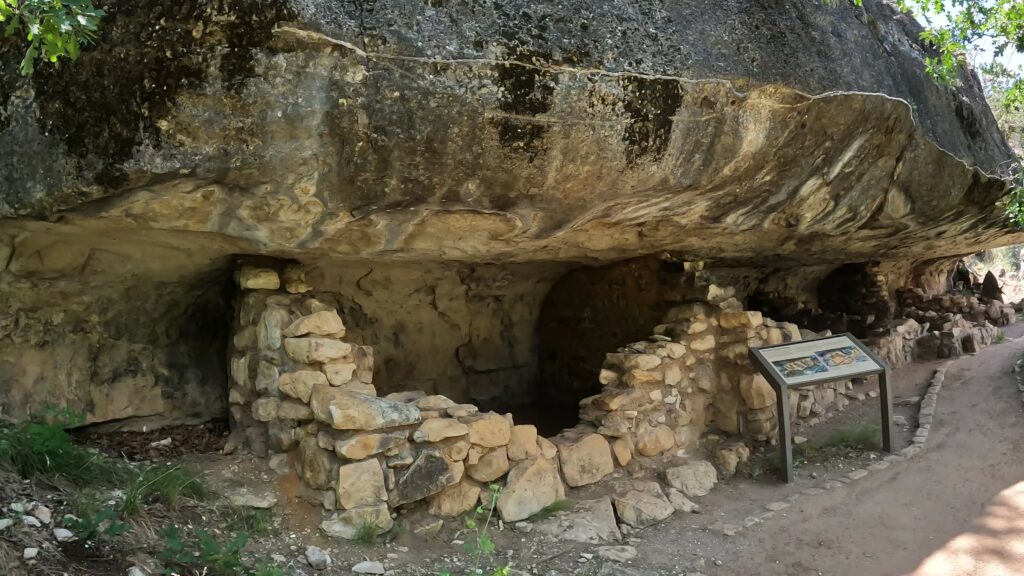
Two Guns Graffiti Gas Station and KOA
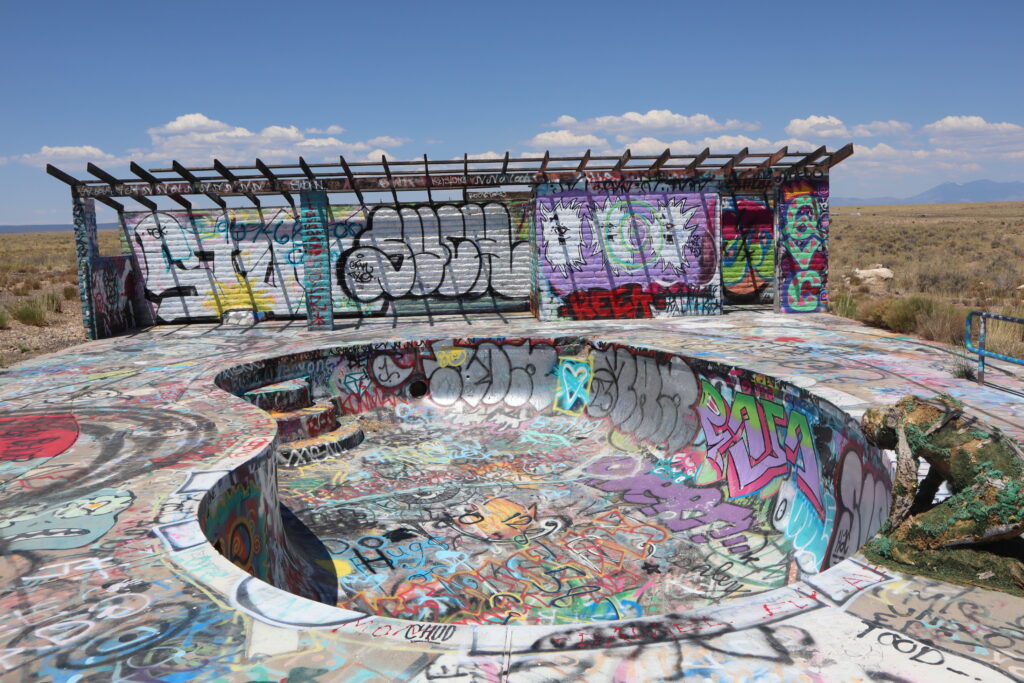
Two Guns Apache Death Cave, Pueblo Ruins, and the old Route 66 Diablo Bridge
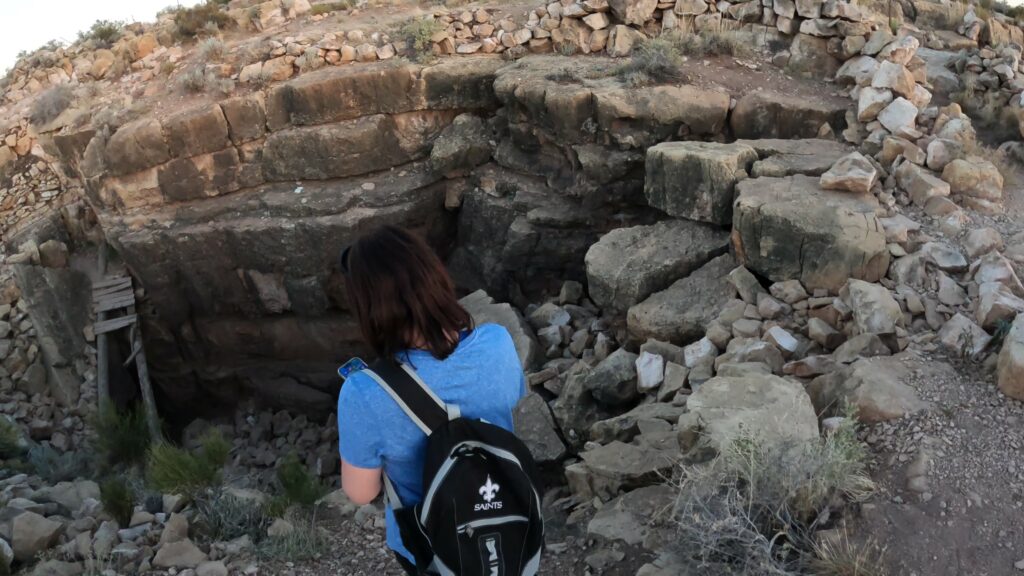
Winslow, AZ: Standin’ On the Corner and 9/11 Remembrance Park
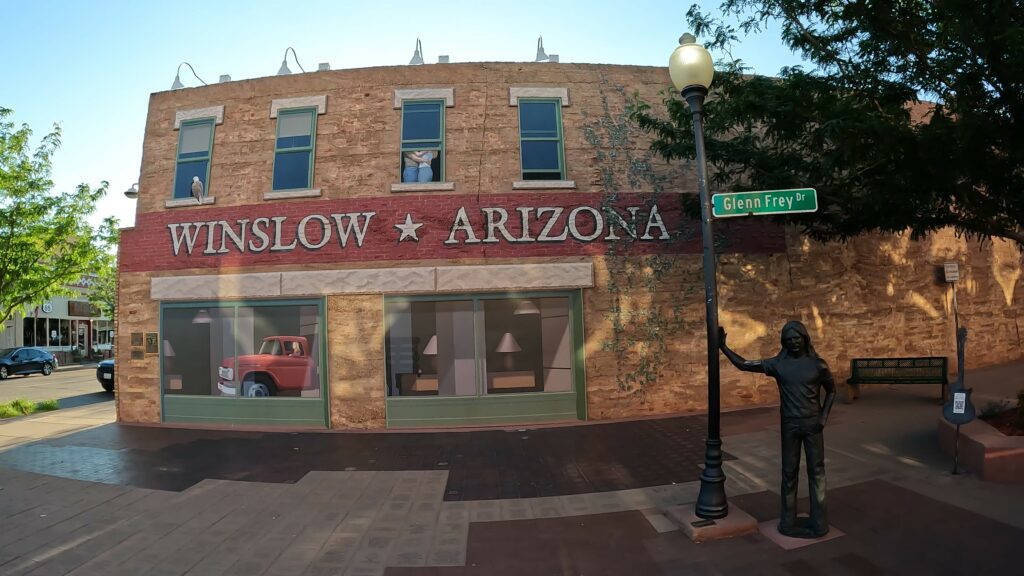
Holbrook, AZ: Old Route 66 Town
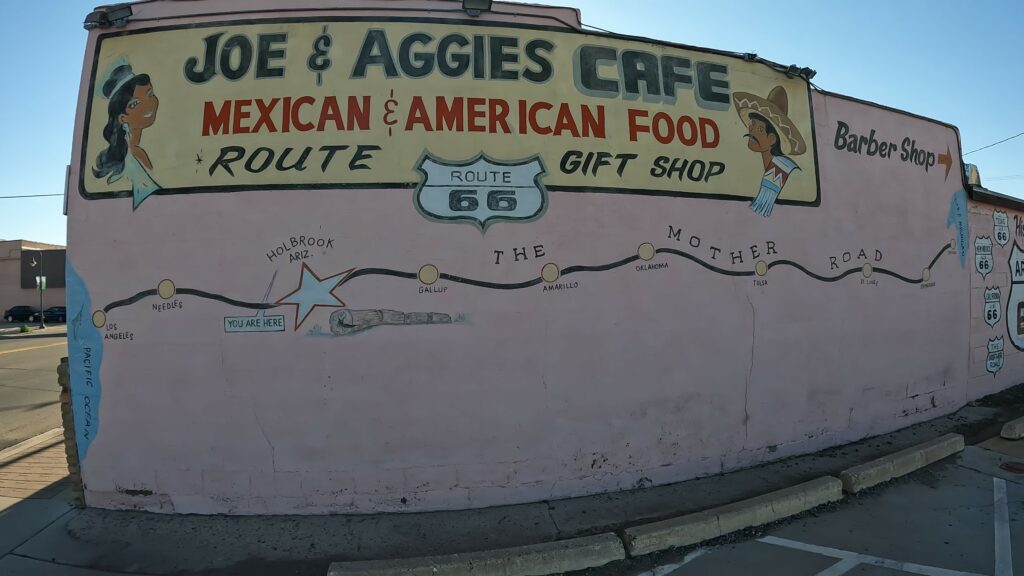
Meteor Crater Natural Landmark
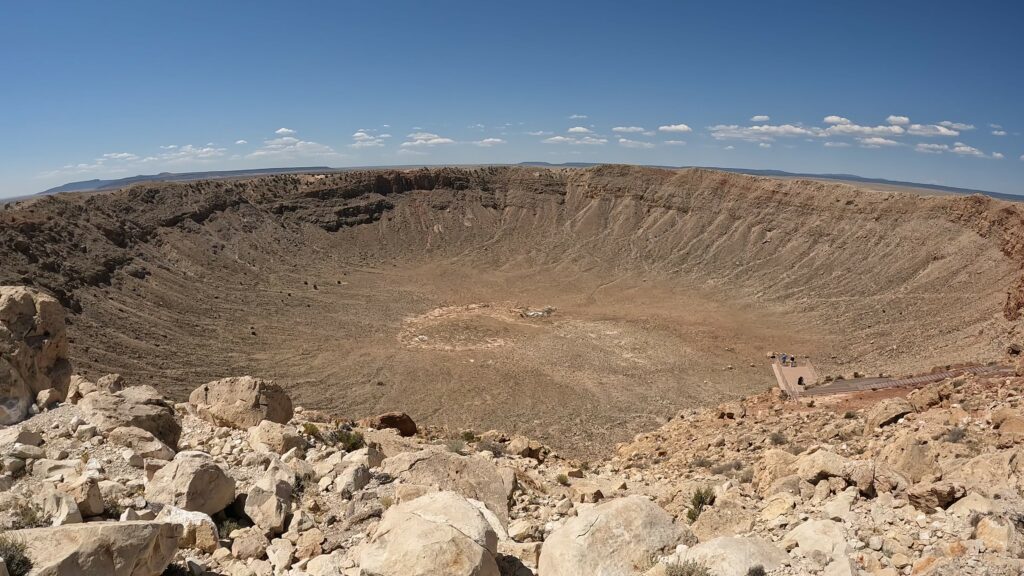
Petrified Forest National Park
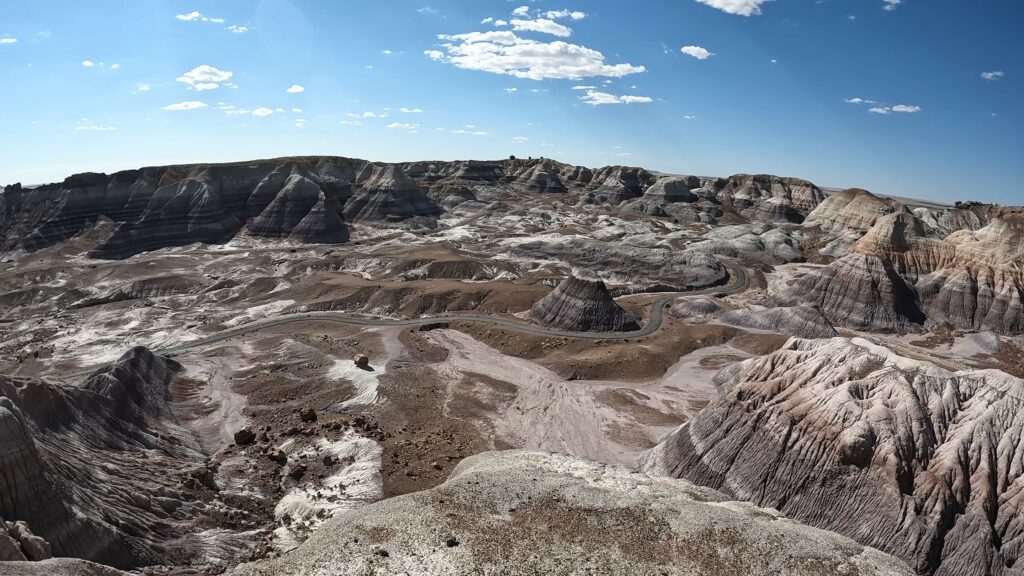
North of Flagstaff
Wupatki National Monument

Sunset Crater Volcano National Monument
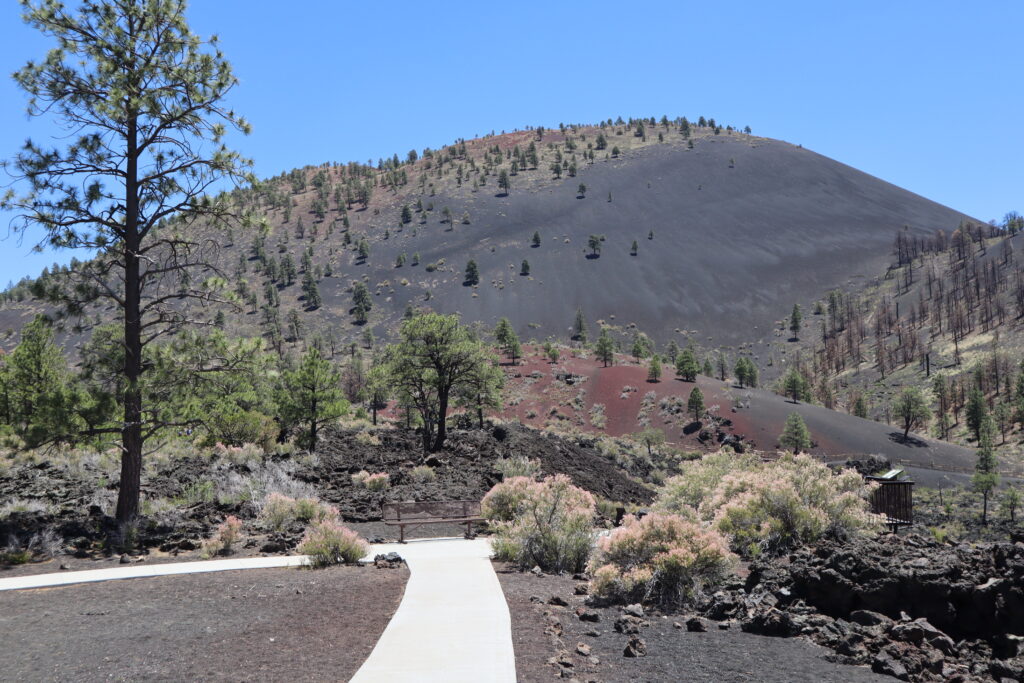
Abandoned Anasazi Inn Gray Mountain
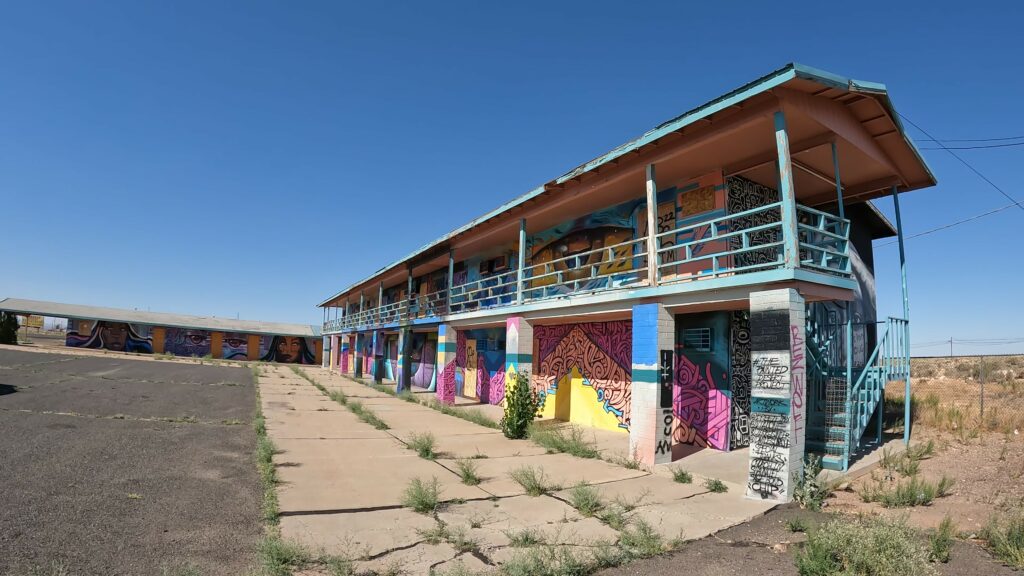
Conclusion
The Cameron Suspension Bridge is a proud symbol of engineering prowess and historical legacy. From its humble beginnings to its present-day significance, this bridge has withstood the test of time, connecting communities and fostering economic growth. As restoration efforts continue and plans for future development take shape, it is clear that the Cameron Suspension Bridge will continue to be a cherished landmark and a source of inspiration for generations to come.
If you like this content, I know you’re enjoying all the other epic Arizona trip videos around Flagstaff and all over the state to help you plan and be inspired to take your next epic trip with your significant others. Also, check out our YouTube playlist to see all our videos on the Epic Arizona Trip.
Do us a favor, go ahead and subscribe, and don’t forget to comment down below especially if you have explored the Cameron Suspension Bridge. Thanks for watching, and as always, we will see you in the next video.
FAQ
1. Can I walk or drive across the Cameron Suspension Bridge?
No, currently the Cameron Suspension Bridge is not open to pedestrian or vehicle traffic due to safety reasons.
2. Are there any fees to visit the Cameron Suspension Bridge?
No, visiting the Cameron Suspension Bridge is free of charge. It is accessible to the public and offers a unique opportunity to view the bridge without any entrance fees.
3. Are there any guided tours available for the bridge?
No. Guided tours are not available for the bridge.
4. Can I capture photographs or videos of the Cameron Suspension Bridge?
Absolutely! Visitors are welcome to capture photographs and videos of the Cameron Suspension Bridge for personal use. It is a great opportunity to capture the beauty of the bridge and create lasting memories. However, you will not have access on the bridge; rather, at both ends. The bridge is fenced off on the ends so no access on the bridge is allowed.

Leave a Reply